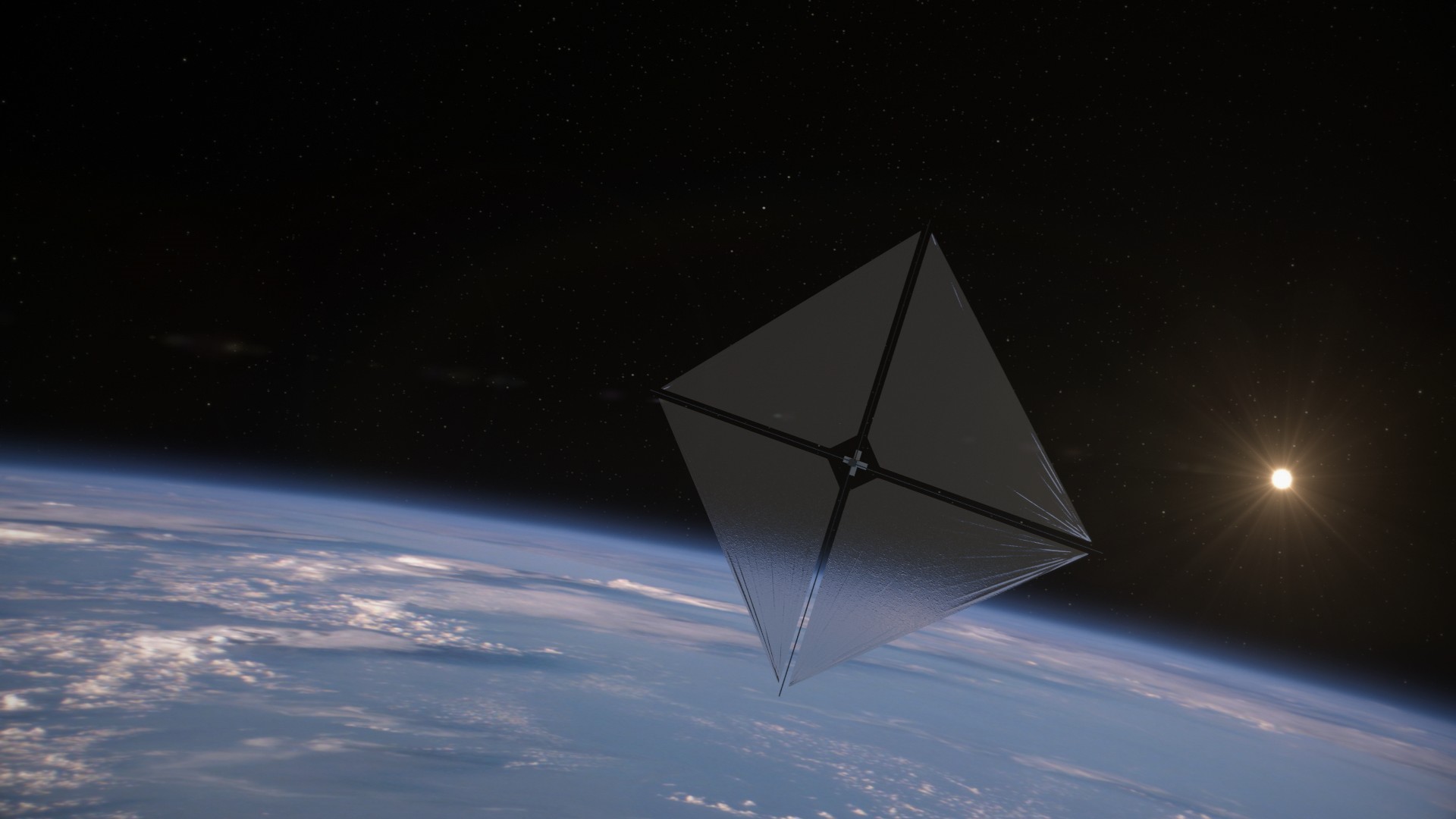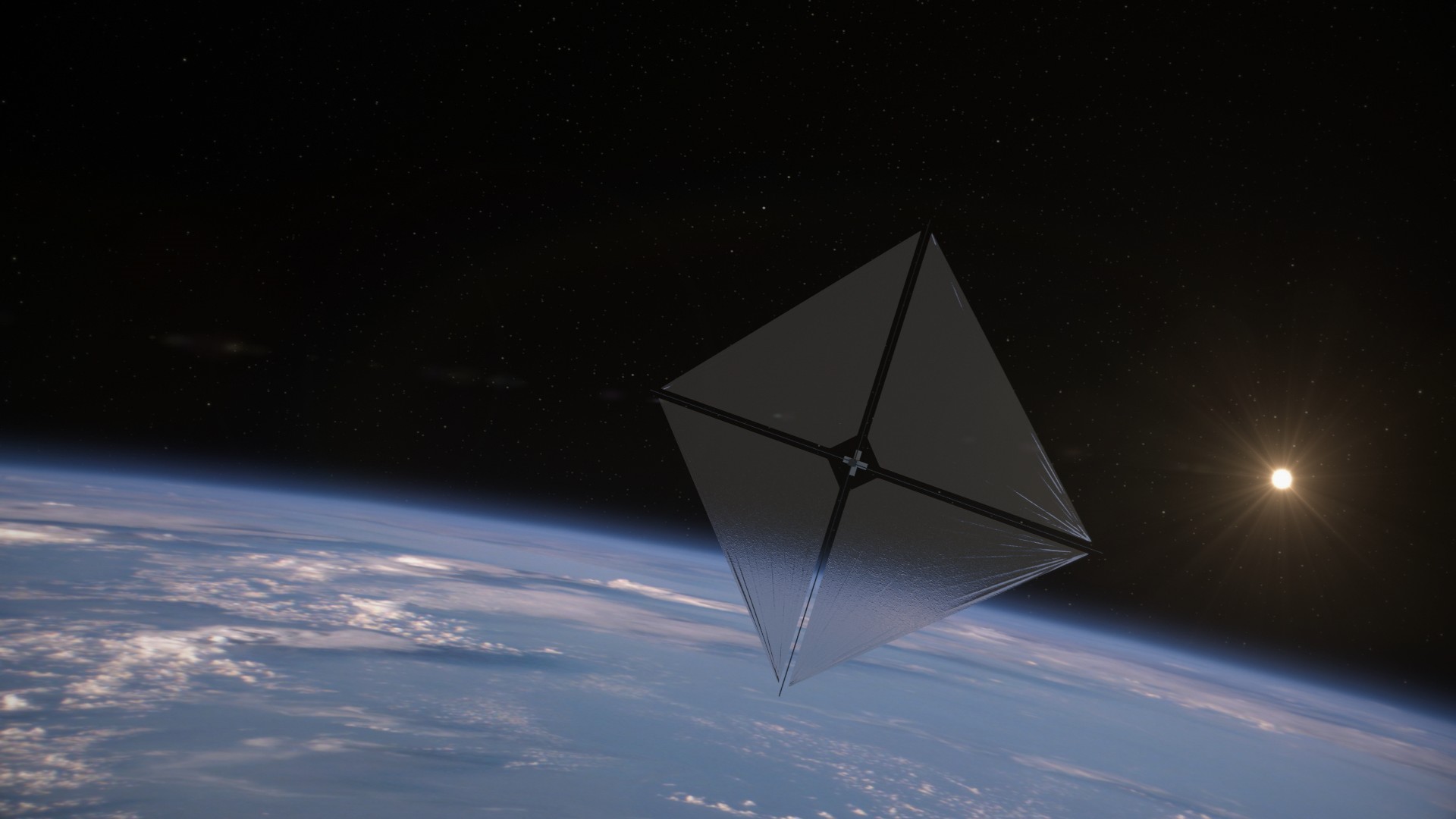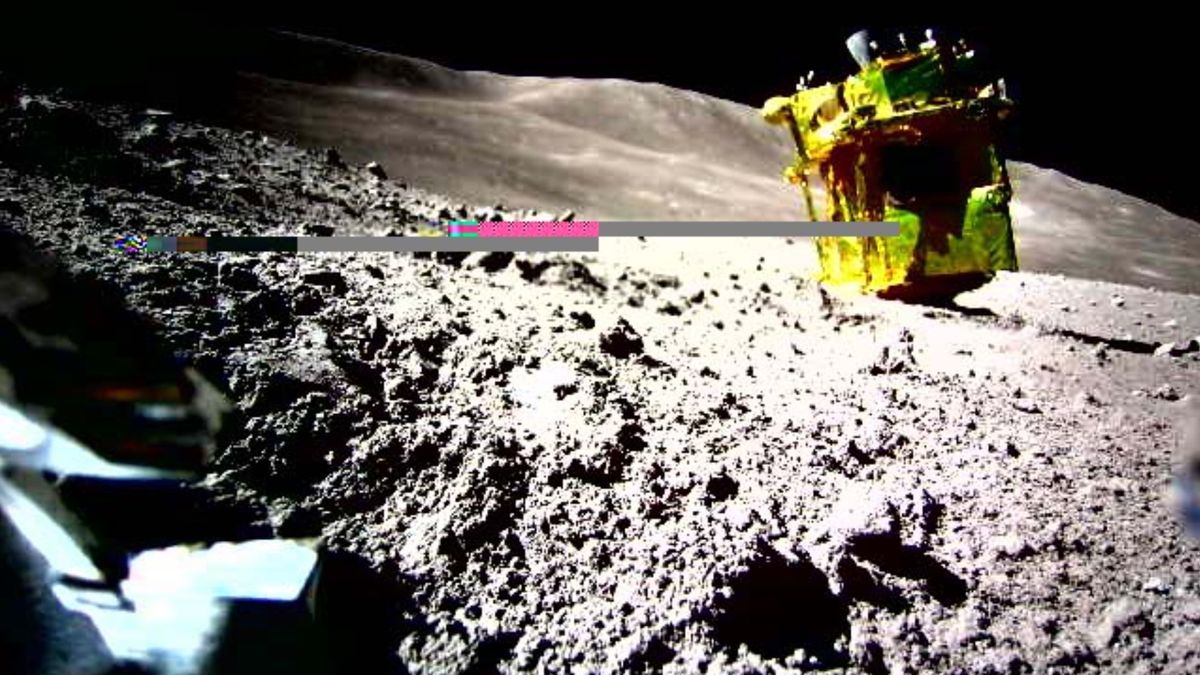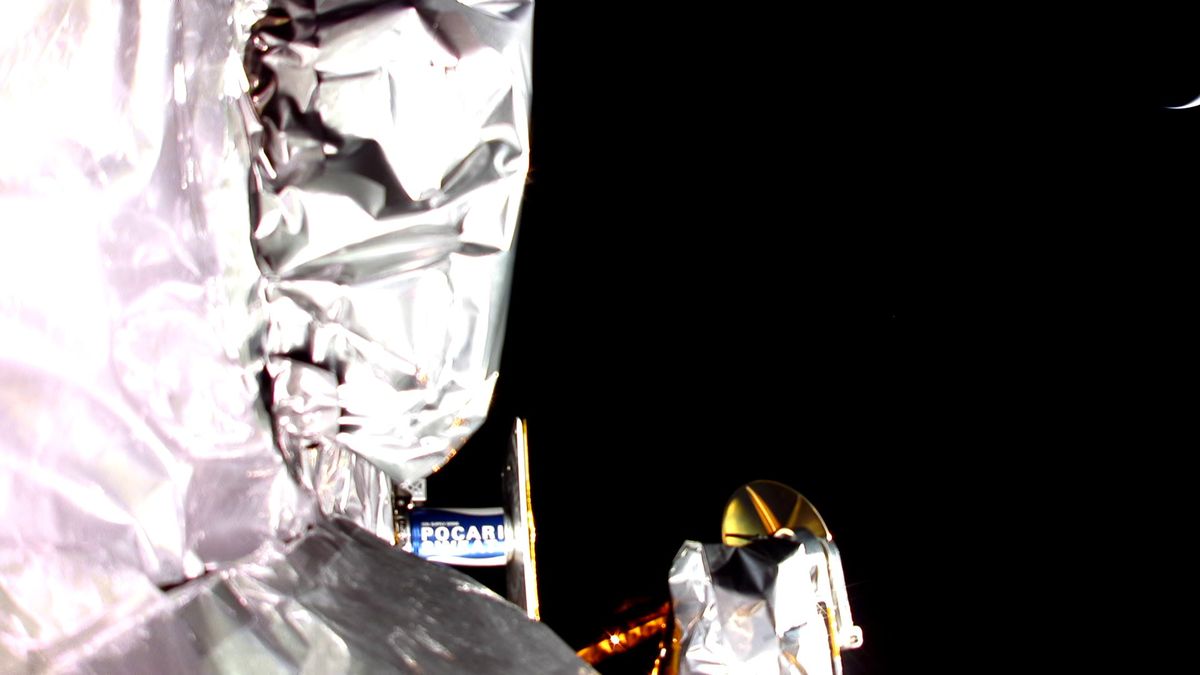NASA’s technology-demonstrating Advanced Composite Solar Sail System (ACS3) has a bent boom in Earth orbit, a newly released photo shows.
The ACS3 spacecraft launched April 23 to test key aspects of solar sailing, a next-gen propulsion strategy NASA thinks could greatly advance our exploration of the solar system. Solar sails harness the momentum of photons, using their subtle but constant push to cruise through the heavens like a boat through the ocean, without the need for propellant.
ACS3’s main objective was to test the deployment of the craft’s four composite booms, which support its 860-square-foot (80-square-meter) light-catching sail. Those booms deployed successfully in August, but their current configuration isn’t exactly textbook, NASA officials revealed in an update on Tuesday (Oct. 22).
“While the solar sail has fully extended to its square shape roughly half the size of a tennis court, the mission team is assessing what appears to be a slight bend in one of the four booms,” the update reads.
“This likely occurred as the booms and sail were pulled taut to the spacecraft during deployment,” it adds. “Analysis indicates that the bend may have partially straightened over the weeks since boom deployment, while the spacecraft was slowly tumbling.”
Related: NASA’s solar sail spacecraft is visible in the night sky. Here’s how to see it
That tumbling began when the mission team deactivated ACS3’s attitude-control system — an intentional move made “to accommodate the spacecraft’s changing dynamics as the sail unfurled.” That system has not been reactivated, so ACS3 is still tumbling slowly. But that’s not a big deal, NASA officials said — and they’re not too worried about the bent boom, either.
“The mission team predicts the slight bend in one of the four booms will not inhibit the Advanced Composite Solar Sail System’s ability to execute its sailing maneuvers later in the technology demonstration,” agency officials wrote in Tuesday’s update.

Solar sailing is still in its infancy, with just a few missions in the books already. Japan’s Ikaros spacecraft was the first to deploy a solar sail in space and use it as its main mode of propulsion — and Ikaros did this in interplanetary space, on its way toward Venus. (Ikaros launched with Japan’s Akatsuki Venus orbiter in May 2010.)
NASA’s tiny NanoSail-D craft deployed its sails in Earth orbit in late 2010, and LightSail-2, a mission operated by the nonprofit Planetary Society, followed suit in July 2019.
NASA’s Near-Earth Asteroid Scout cubesat launched as a rideshare on the Artemis 1 moon mission in November 2022. NEA Scout was supposed to sail its way to an asteroid, but mission team members never established contact with the little probe after launch.



